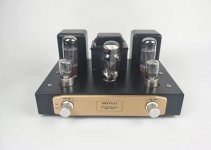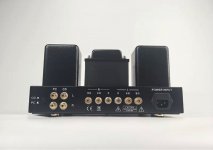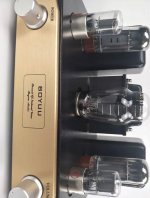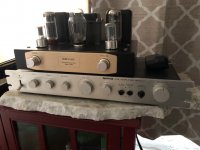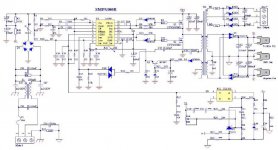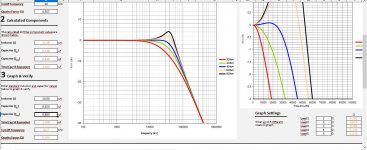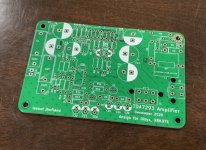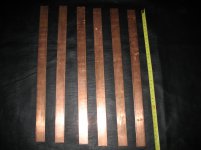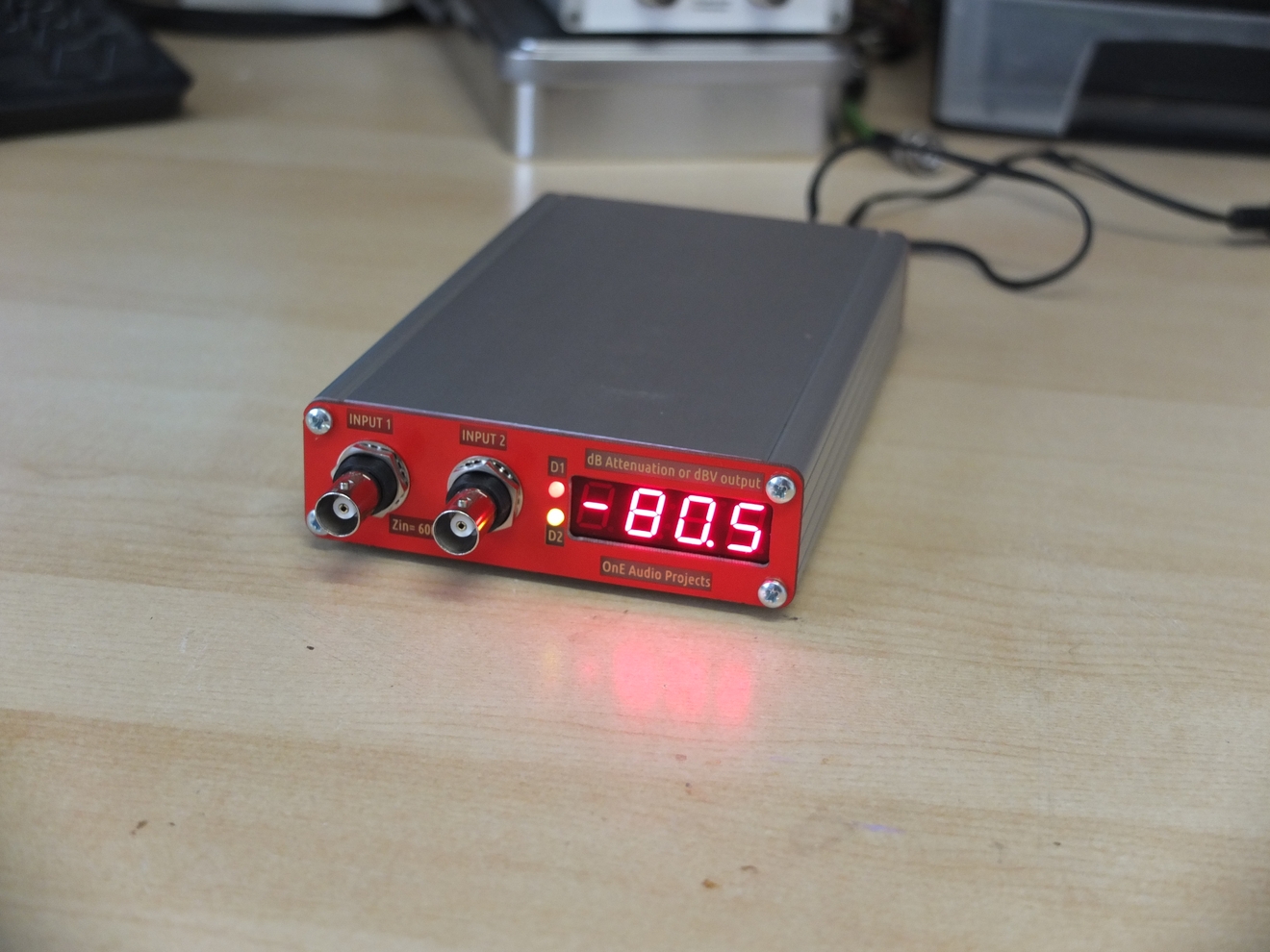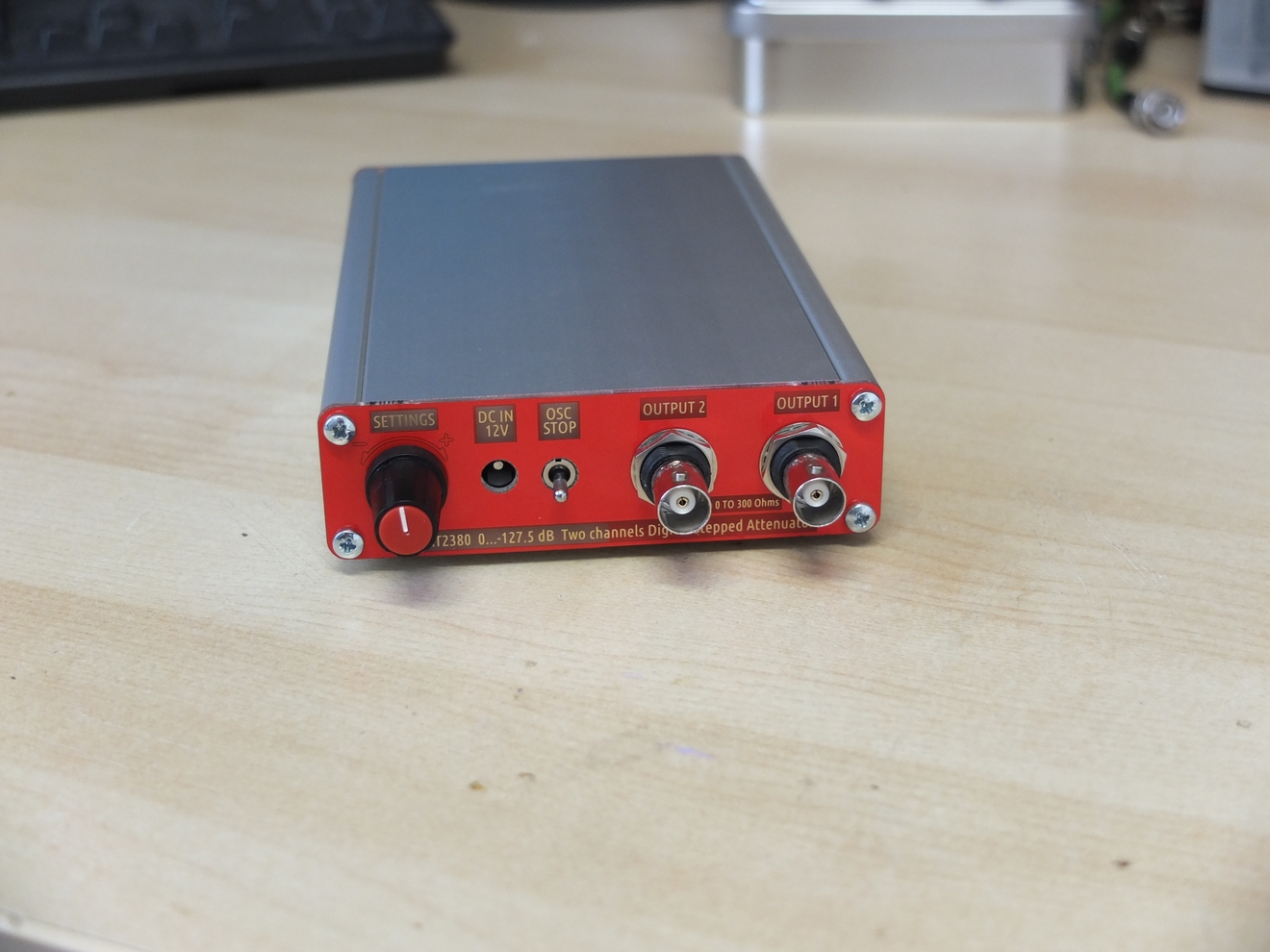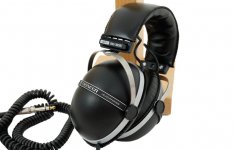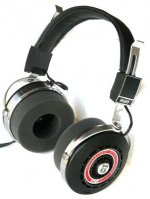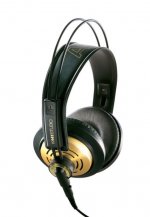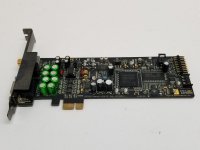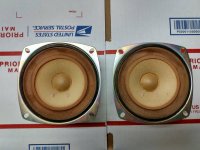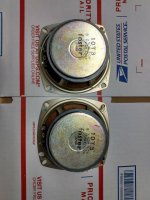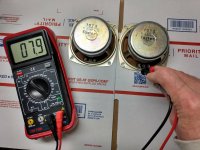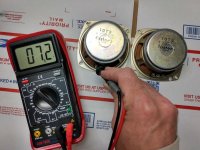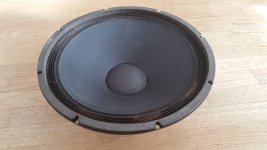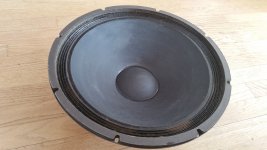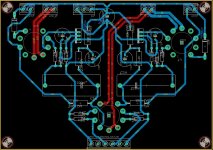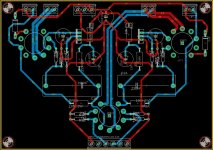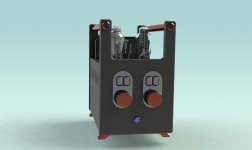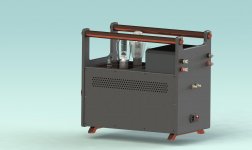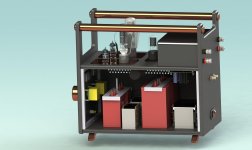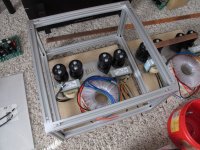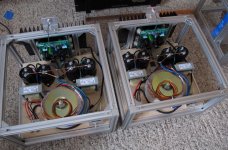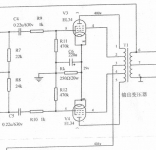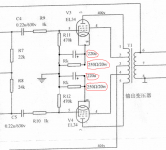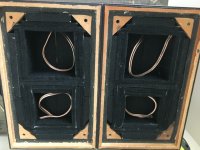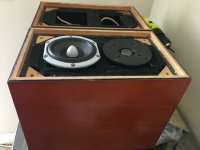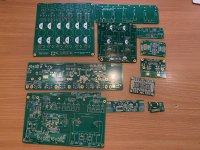Frex The 26/11/2017
AT2380v2 Dual Channel Digitally controlled stepped attenuator Group-Buy
The dedicated thread of the project on DIYaudio is here :
AT2380v1 // 2 Channels digitally controlled stepped attenuator
Project description :
----------------------------
The AT2380 is a dual channels digitally controlled passive stepped attenuator.
It can be used to reduce the signal level in order to fit with the range of the target device.
It has been designed to doesn’t introduce any significant distortion and noise by using fully
passive attenuation network with high performance resistors.
There is NO active parts in the signal path.
To avoid any noise contamination from all on-board digital control circuitry,
all clocks can be disable keeping the attenuator to it’s current state (frizzed value).
One of the main purpose of this attenuator is to help performing signals measurements
(when testing audio devices for example) with analysis hardware such an audio sound-card.
Anyway, it can be of course used for any purpose where signal level control is needed.
For ease of use, the attenuation setting is made by a single rotary encoder
and it’s value is displayed directly on a four digits seven-segment LEDs display.
In addition, if some optional parts are mounted, an auto-track mode is available.
The auto track mode allow user to select directly in dBV the desired
output voltage level wanted at the output of the attenuator. (servo control loop).
The entire design fit in an small aluminium enclosure and the PCB panel include the main
board and also front and rear panel already drilled and engraved.
So, there is no need to make any drilling to get a very clean and beautiful DIY instruments !
The key specs are :
----------------------------
- full digital control (5M570 CPLD, VHDL coded).
- 2 pseudo isolated attenuators Channels
- Zin= 600 Ohms , Zout = ~ 0 to 300 Ohms (Can be modified if needed)
- Flat frequency response (± 0,05dB) from DC..1MHz
- 0 to 127,5 dB attenuation in 0,5 dB step (8 bits / 256 steps)
- Direct dB attenuation setting displayed on 4 digits seven segments LEDs.
- Five selectable dB steps : 0.5 ,1 , 3, 6 and 10 dB by encoder increment.
- Optional output level auto-tracking mode from +10 dBV to – 85 dBV (attenuation only) .
- Full internal clock enable switch, for ultra quiet operation mode (no spurious).
- Shielded design to improve RF performance and noise immunity .
- Low cost design and easy to find parts.
- 100x160mm PCB size, fit in Hammond 1455 series extruded aluminium enclosure.
- Front and rear panels are made in PCB with all holes drilled and with gold silkscreen.
- Through holes axial or SMD (1206) ladder attenuator resistors types.
Below, some pictures of the unit (the v1 prototype !) :
You can also show the attenator in situation in these two presentation videos :
AT2380 DIY 2 channels digitally controlled stepped attenuator- Introduction video Part 1/2
AT2380 DIY 2 channels digitally controlled stepped attenuator- Introduction video Part 2/2
Some documents are available below for download (30/11/2017 update) :
--------------------------------------------------------------------------
Group-buy organization :
------------------------------------
I open now a group buy for the
BARE PCB of the AT2380v2 project.
It's a PCB panel including the 2 layers 100x160 main PCB and
the front and rear panels for the 1455 Hammond enclosure.
Panels are drilled with all holes and marking, they are also
part of shielding.
Bare PCB(v1) picture:
The minimum number of order required is 10.
If this quantity is reached, the price would be
30€ all included.
(Bare PCB, worldwide shipping in priority letter without insurance, and Paypal fees).
The price could be lowered if pre-order quantity is much higher(>20).
I provide two bom files, with and without tracking mode enabled.
These bom file can be imported directly in Mouser for fast and convenient
parts ordering.
All parts list are coming from Mouser, so ordering is easy and fast.
The total Mouser bom cost are (this day):
---------------------------------------------------------
AT2380v2 without track mode
: 114€
AT2380v2 with track mode :
135€
This include all parts, enclosure and button.
(You just need to find a small translucent red Plexiglas for the 7 segments display).
(The bom cost doesn't include the PCB)
It is a pre-order list, i will ask for payment as soon minimum order is reached
If there is no sufficient pre-order, i will cancel the group-buy.
The group-buy is opened until
16 December 2017.
At this time, i will ask for payment to order PCB to manufacturer (PCBcart).
I provide to all PCB buyers a very complete design folder,
including many documents and the full CPLD code source (writed in VHDL).
(it can be tweaked if needed).
IMPORTANT NOTE : You need an USB-Blaster to load the CPLD firmware in the CPLD.
(You can find it for few €/$ on ebay or Aliexpress)
If you are interested to join the group-buy :
Send me a PM with your location (country) and the number of PCB required
or post a message and then i will edit the buyers list below :
Pre-order list for the AT2380v2 bare PCB's:
-----------------------------------------------------------
Pseudo--Qty-----Location (country) ---- Payment received -------------Letter sent ------------ Receipt acknowledge
Frex--------------------------1--------France-----------------Payment DONE
Jcga--------------------------1--------France-----------------Payment DONE---------------------------Shipped----------------Confirmed
jhenderson01075 -------1--------USA--------------------Payment DONE-----------------------------Shipped
CeeVee---------------------1--------Portugal---------------Payment DONE----------------------------Shipped----------------Confirmed
Duster1---------------------2--------Estonia-----------------Payment DONE---------------------------Shipped
hallodeletue---------------2--------Germany--------------Payment DONE----------------------------Shipped----------------Confirmed
_jan_ -----------------------2--------Germany---------------Payment DONE---------------------------Shipped
markus22ch --------------2--------Switzerland-----------Payment DONE----------------------------Shipped
diyaudnut------------------1-------USA----------------------Payment DONE---------------------------Shipped-------------------Confirmed
bk856er--------------------1--------USA---------------------Payment DONE---------------------------Shipped-------------------Confirmed
mkc--------------------------1--------Danemark-------------Payment DONE--------------------------Shipped
Emynet---------------------1------- Italy----------------------Payment DONE--------------------------Shipped
Demian---------------------2-------USA---------------------Payment DONE---------------------------Shipped
gazzagazza---------------1-------New Zealand---------Payment DONE----------------------------Shipped-------------------Confirmed
mlloyd1 --------------------2-------USA-----------------------Payment DONE-------------------------Shipped-------------------Confirmed
Techland-------------------2------ Germany-----------------Payment DONE--------------------------Shipped
BDL--------------------------1-------Romania----------------Payment DONE--------------------------Shipped-------------------Confirmed
Zigi---------------------------2-------Poland-------------------Payment DONE--------------------------Shipped
------------------------------------------------------
TOTAL Pre-order = 26
Good news, on 30/11, the minimum order is reached !
NOTE : because of a more bigger per-orders than expected,
the panel price goes down and will be 25€ instead of 30€.
(including shipping and Paypal fees).
The 16/12/2017 -- GROUP BUY IS NOW CLOSED.
All Paypal invoices has been been sent.
PCB manufacturing will be send as soon all payment done.
Payment status can be show on the above table.
UPDATE The 22/12/2017
All payments has been received, thanks to all.
The PCB order has been sent for manufacturing and will arrive in about 10 days.
I will post pictures as soon they are in my hands.
All letters will be send to all in stride.
Update the 30/12/2017
The four design files linked above has been updateded
according to first reales of design folder.
Update the 04/01/2018
Bare PCB are arrived this day.
Letters will be prepared for shipping
in next days.
Update the 08/01/2018
All letters has been shipped.
Please, inform me when it's in your hands
🙂
Frex
I hope that enjoy some DIYers
🙂
Frex
